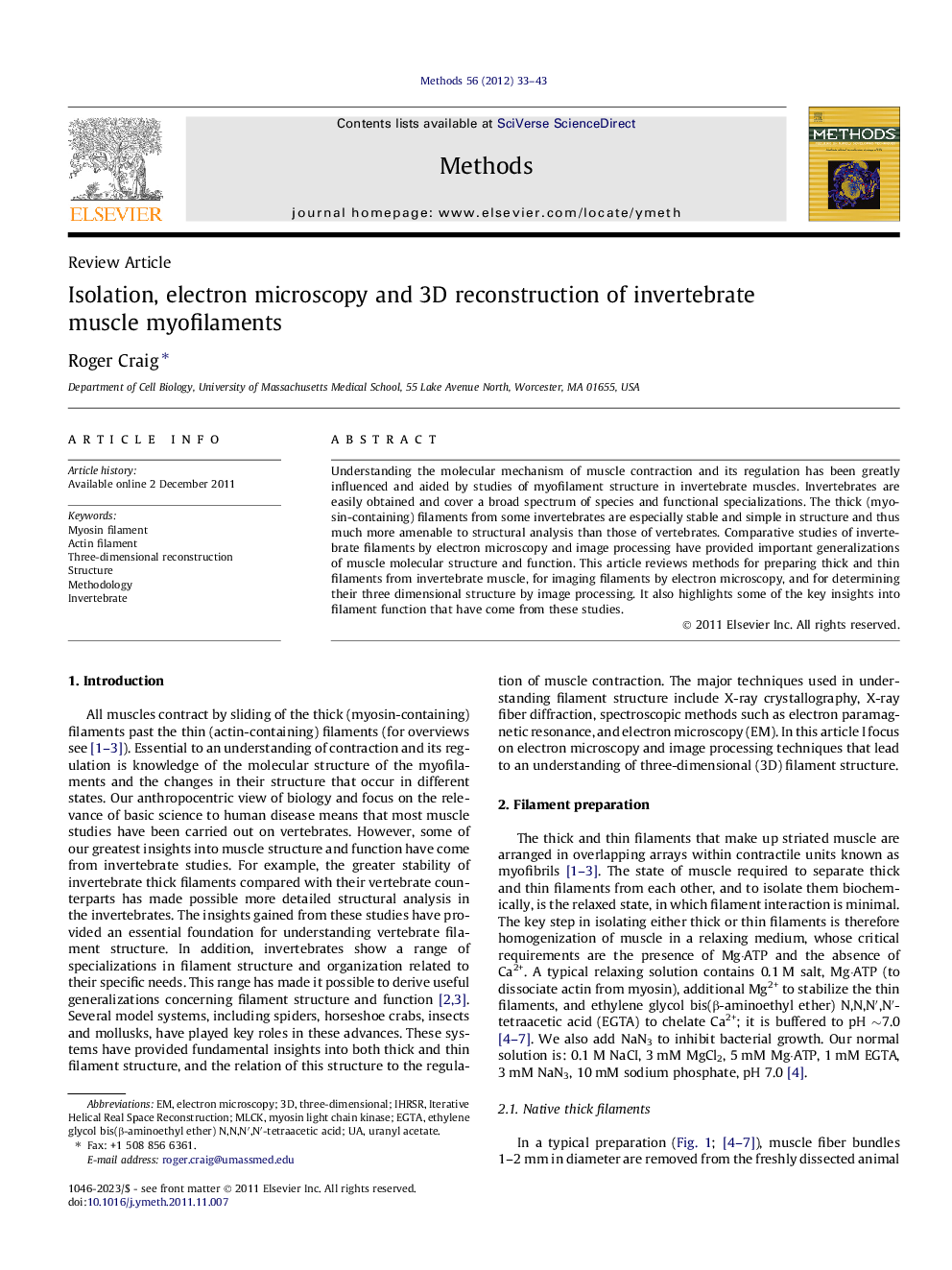| Article ID | Journal | Published Year | Pages | File Type |
|---|---|---|---|---|
| 1993783 | Methods | 2012 | 11 Pages |
Understanding the molecular mechanism of muscle contraction and its regulation has been greatly influenced and aided by studies of myofilament structure in invertebrate muscles. Invertebrates are easily obtained and cover a broad spectrum of species and functional specializations. The thick (myosin-containing) filaments from some invertebrates are especially stable and simple in structure and thus much more amenable to structural analysis than those of vertebrates. Comparative studies of invertebrate filaments by electron microscopy and image processing have provided important generalizations of muscle molecular structure and function. This article reviews methods for preparing thick and thin filaments from invertebrate muscle, for imaging filaments by electron microscopy, and for determining their three dimensional structure by image processing. It also highlights some of the key insights into filament function that have come from these studies.
